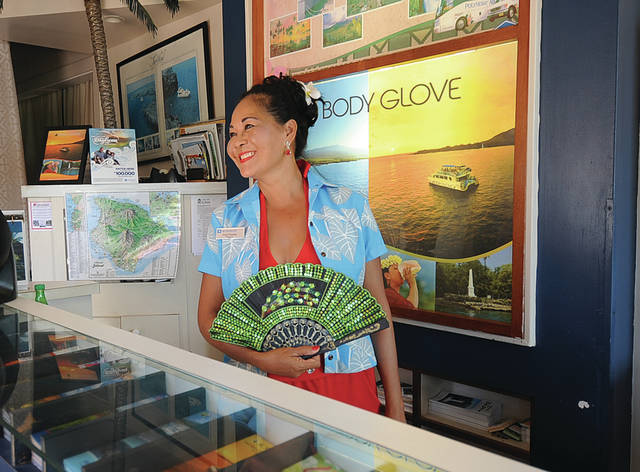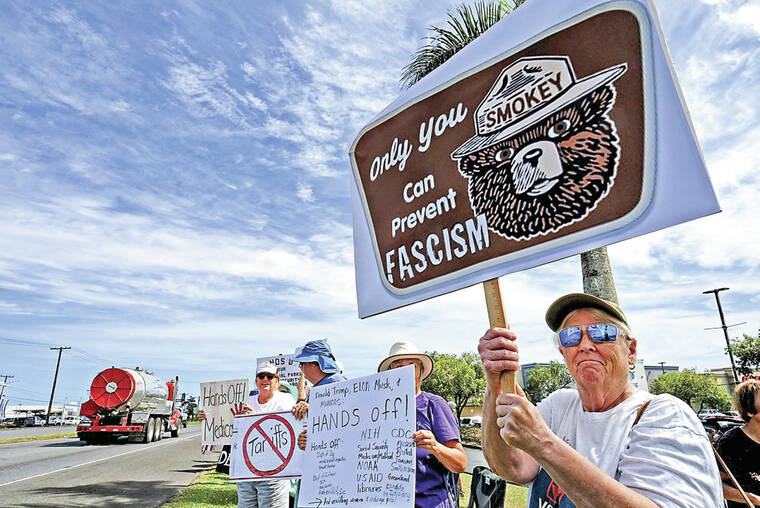KAILUA-KONA — July proved another rough month for Hawaii Island’s most lucrative industry, but tourism officials are hopeful a visitor resurgence is waiting just around the corner.
The Hawaii Tourism Authority (HTA) initially invested in marketing and media campaigns to counteract international news coverage depicting the island as a disaster area in the wake of the Kilauea eruption, sewing seeds of doubt across the world about safety in travel.
Now, the Hawaii Visitors and Convention Bureau (HVCB) is spending $2 million HTA dollars on a more aggressive messaging endeavor focused heavily on U.S. and Japan travel markets in an attempt to control the narrative rather than mitigate it.
“Our strategy is to change existing consumer perception from ‘It’s just not the right time to visit,’ to ‘Now, this may be the best time ever to visit,’” said Jay Talwar, HVCB chief marketing officer. “Be the first to see what the new lava flow has created.”
Talwar said marketing research has shown that as Kilauea has significantly settled and VOG has dissipated, the prevailing perception of Hawaii Island conditions are changing, spawning opportunity where once there was only apprehension.
“What we saw was, very positively, fear was extremely low and fascination was extremely high,” he explained. “Once people feel that it’s safe to come view what’s left from what the lava created, I think there’s going to be positive demand for the island. … Be the first to see what the new lava flow has created.”
According to HTA numbers from July, Big Island visitor spending and arrivals took a nosedive from last year’s record highs for the second straight month, dropping 7.2 percent to $201.1 million and 12.7 percent to 153,906, respectively.
The island’s occupancy rate also dipped 4.7 percent from last July and Kohala Coast hotels saw a 7 percent decline in revenue per available room.
August numbers, when they’re released at the end of September, aren’t likely to prove much better. But Ross Birch, president of the Island of Hawaii Visitors Bureau, is optimistic that booking numbers could rebound to the same levels as last year, if not improve, from September through Christmas.
He added his hopefulness appears to be shared among the business community, as hotels and activities providers he’s spoken with believe the Kilauea situation has turned a corner.
“What we’re finding out is that people book in the month, for the month,” Birch said. “We’re hearing that from a lot of hotels … for the late summer.”
Volcanoes National Park has announced plans to partially re-open on Sept. 22, though it will do so in limited fashion. Birch said Thurston Lava Tube will remain closed and the Jaggar Museum may never open its doors again. The Volcano House isn’t likely to be ready for visitors in three weeks either, though it may offer some retail services by then.
Still, any accessibility to the park is helpful in handling the visitor load Birch and Talwar are hoping to inspire, as Birch said the closure of the park taught the island’s tourism industry a lesson or two.
“We’ve discovered that we really have a need for product development on the island,” he said. “We have so many great assets and opportunities, but they can’t handle the numbers we’re bringing in as well as Hawaii Volcanoes National Parks did.”
There is no immediate timetable for a finalized reorganization of the park or the development of a new lava viewing area, beyond what can be accessed via helicopter tours, Birch said.
Thus, in the interim, a natural disaster that initially spawned an economic downturn now may create more business opportunities in what was already Hawaii Island’s most prominent and profitable economic sector.
Email Max Dible at mdible@westhawaiitoday.com.






